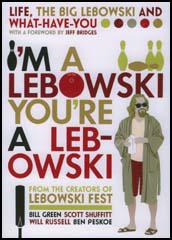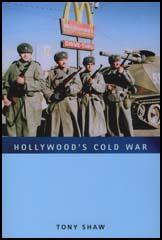Spartacus Review
Volume 5: 4th November, 2007
Cinema

Title: I'm a Lebowski: You're a Lebowski
Author: Bill Green & Scott Shuffitt
Editor:
Publisher: Canongate
Price: £12.99
Bookshop: Amazon
Spartacus Website: Theatre & Cinema
Category:
Written by the organisers of Lebowski Fest, I'm a Lebowski, You're a Lebowski is the ultimate guide to this cult film. The book features a foreword and behind-the-scenes photos by Jeff Bridges, who plays the film's main character of 'The Dude'. It includes interviews with virtually every actor from the film including John Goodman, Julianne Moore, and John Turturro. Within the pages of this book you'll also find out how to order a White Russian like an Achiever and read interviews with the real-life eccentrics who inspired the film's main characters. Jeff Dowd (The Dude) and John Milius (Walter) tell their stories and describe how they influenced the film.

Title: Hollywood's Cold War
Author: Tony Shaw
Editor:
Publisher: Edinburgh University Press
Price: £18.99
Bookshop: Amazon
Spartacus Website: Theatre & Cinema
Category:
This title is intended for undergraduates and lecturers in American Studies, History, Politics, and Film, Media and Communication Studies.It illuminates the intriguing collaboration between Hollywood and the US Government in the production of propaganda.American filmmakers are deeply involved in the War on Terror. This authoritative and timely book offers the first comprehensive account of Hollywood's propaganda role during the defining ideological conflict of the twentieth century: the Cold War. In an analysis of films dating from America's first Red Scare in the wake of the 1917 Bolshevik Revolution to the collapse of the Berlin Wall in 1989, Tony Shaw examines the complex relationship between filmmakers, censors, politicians and government propagandists.Drawing on declassified government documents, studio archives and filmmakers' private papers, Shaw reveals the different ways in which cinematic propaganda was produced, disseminated, and received by audiences during the Cold War. In the process, he blends subjects as diverse as women's fashions, McCarthyism, drug smuggling, Christianity, and American cultural diplomacy in India. His conclusions about Hollywood's versatility and power have a contemporary resonance which will interest anyone wishing to understand wartime propaganda today.This title is the first comprehensive account of Hollywood's role during the Cold War. It is a new interrogation of the collaboration between filmmakers and government in the production of propaganda. The use of primary documentation and new archival research make this book unique.
